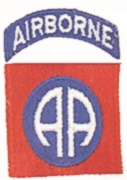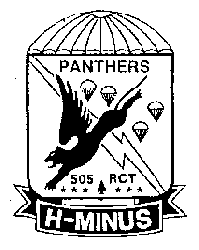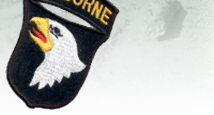Howard Hoye Rifleman 505th PIR 82nd Airborne Division
 When D-day came along, my outfit had been shaped into a tough veteran fighting unit. We had made our first jump into enemy territory in Sicily, where we had been spread out over a large area. When the fighting there was over we made another combat jump near Salerno, Italy. The soldiers of general Clarks Army had established a bridgehead near Salerno but were confronted with heavy counter attacks by the Germans and called for our help. We did some of our fiercest fighting there in the mountains of Italy, but it prevented the fifth army from being driven back to the Mediterranean sea. When D-day came along, my outfit had been shaped into a tough veteran fighting unit. We had made our first jump into enemy territory in Sicily, where we had been spread out over a large area. When the fighting there was over we made another combat jump near Salerno, Italy. The soldiers of general Clarks Army had established a bridgehead near Salerno but were confronted with heavy counter attacks by the Germans and called for our help. We did some of our fiercest fighting there in the mountains of Italy, but it prevented the fifth army from being driven back to the Mediterranean sea.
We were relieved at the Volturno river and trucked back to Naples where we boarded a ship again and wound up in Northern Ireland at Belfast. It was November 1943 then. From Belfast we were sent to England where the training for the largest airborne maneuvers ever seen at the time began.
 On June the fifth we were at the airport getting ready for the jump. We had been on the airport since the day before, because of the twenty-four hour delay of the invasion. I weighed myself at the airport before loading into the plane and I weighed 300 pounds. My body weight then was about 140 or 145 pounds so you can get an idea of what we carried on our person when we jumped. On June the fifth we were at the airport getting ready for the jump. We had been on the airport since the day before, because of the twenty-four hour delay of the invasion. I weighed myself at the airport before loading into the plane and I weighed 300 pounds. My body weight then was about 140 or 145 pounds so you can get an idea of what we carried on our person when we jumped.
Flying over the English Channel I could see out the open plane door and the sky appeared to be full of our planes and down below the sea looked covered with our ships. I was the number two man out the door and sat right across from it. When we neared the French coast, many anti-aircraft guns opened fire on us. Some planes were hit and some troopers shot before they had a chance to jump. We had our orders that if you could crawl to the door get out of the plane as they did not want any wounded to come back and take up hospital space in England.
When we hit the coast we also hit a heavy fog bank and we were worried we may collide with another plane but when we emerged from the fog I could not see another plane in the sky. Our pilot was clearly lost because we missed our (DZ) drop zone by about 20 miles. After a hard landing and some confusion and the first contact with the Germans we managed to get 30 men together. We fought all night and all day the next day trying to keep out of German hands. We kept losing a few men here and there until just before dark on June the 6th the six of us that were left were surrounded and taken prisoner. By that time we had been almost completely out of ammo.
This was the darkest day of my life as I had always figured I would be killed or badly wounded, but being prisoner of war had never entered my mind. Just before we were captured we had to leave three of my closest buddies behind, believing they were dead. After the was it turned out that two of them had been taken to a hospital by the Germans and had survived.
Our Sgt. who had been shaking like a leave when we were captured was shot by one of the Germans right after we had been taken prisoner. The Germans had fought us before and they seemed to be afraid of us. They must have wanted to set a horrible example of what would happen if we tried anything.
<< BACK
|
